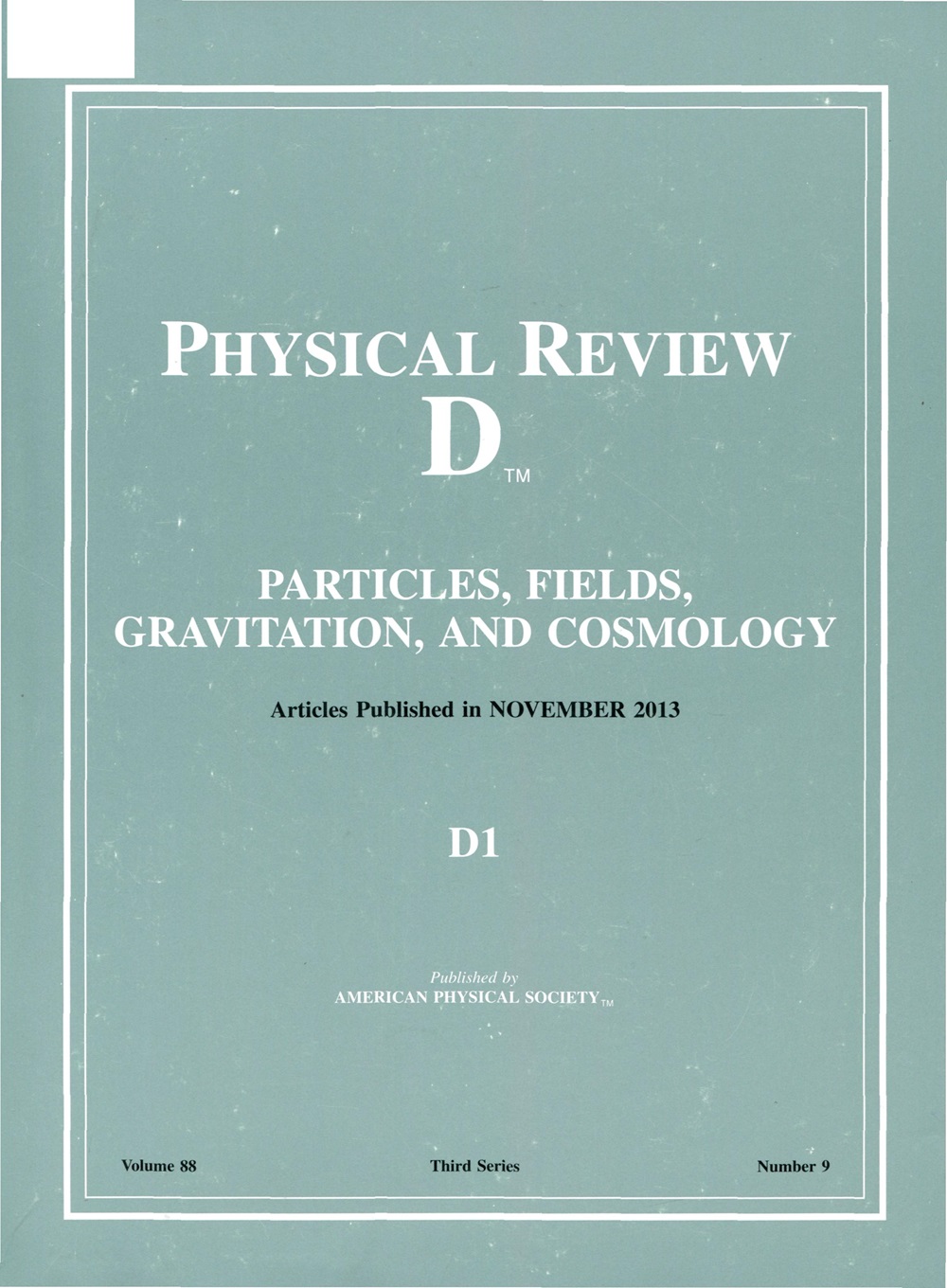Investigating two-loop effects for first-order electroweak phase transitions
IF 5
2区 物理与天体物理
Q1 Physics and Astronomy
引用次数: 0
Abstract
We study first-order electroweak phase transitions in the real-singlet-extended Standard Model, for which nonzero mixing between the Higgs field and the singlet can efficiently strengthen the transitions. We perform large-scale parameter-space scans of the model using two-loop effective potential at next-to-next-to-leading order in the high-temperature expansion, greatly improving description of phase transition thermodynamics over existing one-loop studies. We find that (1) two-loop corrections to the effective potential lead to narrower regions of strong first-order transitions and significantly smaller critical temperatures, (2) transitions involving a discontinuity in the singlet expectation value are significantly stronger at two-loop order, and (3) high-temperature expansion is accurate for a wide range of parameter space that allows strong transitions, although it is less reliable for the very strongest transitions. These findings suggest revisiting past studies that connect the possibility of a first-order electroweak phase transition with future collider phenomenology.研究一阶电弱相变的双环效应
研究了实-单重态扩展标准模型中的一阶电弱相变,其中希格斯场与单重态的非零混合可以有效地增强一阶电弱相变。在高温膨胀过程中,我们使用双回路有效势对模型进行了大规模的参数空间扫描,大大改善了对现有单回路相变热力学的描述。我们发现(1)对有效势的双环修正导致强一阶跃迁的区域更窄,临界温度明显更小;(2)单线态期望值不连续的跃迁在双环阶明显更强;(3)在允许强跃迁的大范围参数空间中,高温膨胀是准确的,尽管对于最强的跃迁不太可靠。这些发现建议重新审视过去的研究,将一阶电弱相变的可能性与未来的对撞机现象学联系起来。2025年由美国物理学会出版
本文章由计算机程序翻译,如有差异,请以英文原文为准。
求助全文
约1分钟内获得全文
求助全文
来源期刊

Physical Review D
物理-天文与天体物理
CiteScore
9.20
自引率
36.00%
发文量
0
审稿时长
2 months
期刊介绍:
Physical Review D (PRD) is a leading journal in elementary particle physics, field theory, gravitation, and cosmology and is one of the top-cited journals in high-energy physics.
PRD covers experimental and theoretical results in all aspects of particle physics, field theory, gravitation and cosmology, including:
Particle physics experiments,
Electroweak interactions,
Strong interactions,
Lattice field theories, lattice QCD,
Beyond the standard model physics,
Phenomenological aspects of field theory, general methods,
Gravity, cosmology, cosmic rays,
Astrophysics and astroparticle physics,
General relativity,
Formal aspects of field theory, field theory in curved space,
String theory, quantum gravity, gauge/gravity duality.
 求助内容:
求助内容: 应助结果提醒方式:
应助结果提醒方式:


